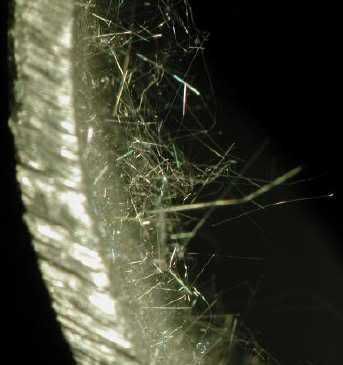tonyi
Senior Member
I've recently been reading up on the metallurgical phenomenon of "zinc whiskers" (and tin whiskers).
Some months ago I encountered a run of 1" RMC that was CHOCK FULL of these things that had grown to maybe 1/2"-3/4" long over time. I hadn't heard of the phenomenon at that point and chalked it up to some fluke in the original galvanizing.
Apparently, all sorts of electronic failures can be traced back to these things:
http://nepp.nasa.gov/whisker/failures/index.htm
I'm wondering what the growth pressure of these things is, and could they possibly grow through insulation if all the angles lined up and they made a straight in run against a piece of wire. The literature suggests that a fault caused by contact of the actual whisker would blow itself clear instantly, BUT the plasma generated during that would be capable of supporting currents of several hundred amps.
Some months ago I encountered a run of 1" RMC that was CHOCK FULL of these things that had grown to maybe 1/2"-3/4" long over time. I hadn't heard of the phenomenon at that point and chalked it up to some fluke in the original galvanizing.
Apparently, all sorts of electronic failures can be traced back to these things:
http://nepp.nasa.gov/whisker/failures/index.htm
I'm wondering what the growth pressure of these things is, and could they possibly grow through insulation if all the angles lined up and they made a straight in run against a piece of wire. The literature suggests that a fault caused by contact of the actual whisker would blow itself clear instantly, BUT the plasma generated during that would be capable of supporting currents of several hundred amps.

